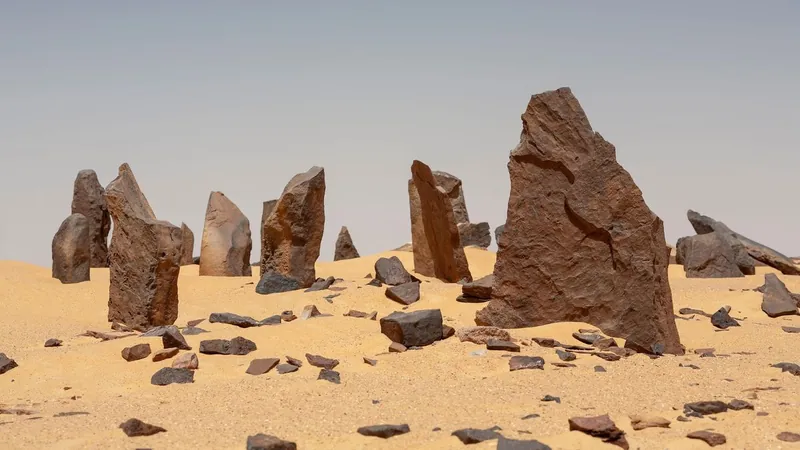
Unveiling the Mysteries of Nabta Playa: The World’s Oldest Astronomical Observatory?
2024-10-07
Author: Sophie
Nabta Playa, an ancient stone circle located in the desolate expanses of southern Egypt, is capturing the attention of historians and astronomers alike as it may hold the title of the oldest known astronomical observatory in the world. Situated approximately 175 miles (280 kilometers) southwest of Aswan, this remarkable site was once the heartland of the ancient Nubian civilization around 7,500 years ago.
While many are familiar with Stonehenge, Nabta Playa predates it by nearly 2,000 years, showcasing the sophistication of early human societies in understanding celestial bodies and their movements. The site originally boasted dozens of upright stones, now mostly housed in a museum in Aswan for their protection, with the originals scattered across the desert floor approximately 60 miles (100 km) west of the Nile River.
Recent research suggests that Nabta Playa was intentionally designed, with certain stones strategically arranged in a circular formation to align with significant astronomical events, like the rising of certain stars. The inner circle, consisting of six prominent stones, likely played a crucial role in rituals or ceremonial practices, while the surrounding 29 standing stones may have functioned as a primitive calendar used by the ancient peoples to track the seasons.
Archaeological excavations, particularly a pivotal dig in 2001, yielded fascinating results. Despite the absence of human remains, the discovery of a complete cow skeleton within the central tomb hints at the importance of cattle herding for the communities that built this site. This evidence implies that these early inhabitants navigated their lives according to the cycles of rainfall and the geography of seasonal lakes, which were vital for nurturing their livestock.
Notably, researchers speculate that certain stones in the circle could mark the sunrise during the summer solstice, providing a critical signal for these ancient people to anticipate the forthcoming rains that would renew the lakes and sustain their way of life.
As modern technology and studies continue to unfold, Nabta Playa stands as a testament to the ingenuity of early civilizations, merging the realms of astronomy and agriculture in a compelling narrative of humanity's quest for understanding the cosmos. For those fascinated by ancient history and mysteries, a visit to this extraordinary site could unlock new insights into our shared past. What secrets could the sands of time still be hiding?









 Brasil (PT)
Brasil (PT)
 Canada (EN)
Canada (EN)
 Chile (ES)
Chile (ES)
 España (ES)
España (ES)
 France (FR)
France (FR)
 Hong Kong (EN)
Hong Kong (EN)
 Italia (IT)
Italia (IT)
 日本 (JA)
日本 (JA)
 Magyarország (HU)
Magyarország (HU)
 Norge (NO)
Norge (NO)
 Polska (PL)
Polska (PL)
 Schweiz (DE)
Schweiz (DE)
 Singapore (EN)
Singapore (EN)
 Sverige (SV)
Sverige (SV)
 Suomi (FI)
Suomi (FI)
 Türkiye (TR)
Türkiye (TR)